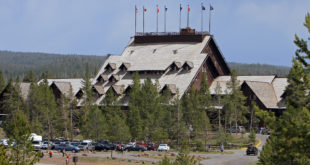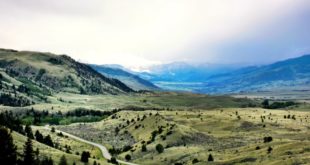Standing at a pullout on the Grand Loop Road and looking across the Yellowstone River at a vast plume of smoke and cinder rising from the LeHardy fire, it’s easy to think of catastrophe – the fires of 1988. Only that would be wrong, on several counts.
The fires of 1988 were bad, sure enough, from the human perspective. We (the collective governmental we) spent over $150 million fighting the fires, which threatened historic landmarks such as Old Faithful Inn. But in the end the firefighters were successful in saving most of the human-built structures in and around the park. No one was killed by fire. It was not a catastrophe.
The forests burned in 1988, as they continued to burn sporadically every year since, but as we now understand (hopefully), this is not a bad thing. Nature has been burning pieces of the Yellowstone forests for hundreds of millenia; not to mention the occasional volcanic eruption. In a sense, the plants and animals of the park have gotten used to the disruption by fire. Some, like the lodgepole pine have made genetic adaptations for it. Much of the flora and much of the fauna reacts positively to the occasional burning of the land; it’s regenerative.
[A map and synopsis of all fires in the Yellowstone region is posted here at Yellowstone Insider in the NEWS section of the site: ]The current fire, the LeHardy, has burned several thousand acres. It doesn’t look pretty to our eyes; a fire burn is an aesthetic offense – a place of visual chaos, of blackness, and death, and lifelessness. But our eyes deceive, life is still very much there. Seeds are ready to grow, microbes to multiply, and underground root systems to send out shoots. Rain (or snow) will put out the fires and provide the elixir of growth. Come spring even our poorly trained eyes will see the burned ground transformed to green.
Rain is coming this week. The forecasts are for thunderstorms in the afternoon or evening almost every day. The weather is also cooling, a little. The cool and more humid air helps the firefighters. The thunderstorms – not so much. Mid-summer thunderstorms in Yellowstone are often more bluster than downpour. They can have high winds and very little rain, which fans forest fires instead of helping to put them out. However a swath of rain from big storms can raise the humidity, and that helps.
The big fires of the Greater Yellowstone Region are mostly outside the park. The biggest is the Gunbarrel fire, about 10 miles east of the East Entrance to Yellowstone. Much of the burn, now over 35 square miles, is in the North Absaroka Wilderness Area, where it’s burning a lot of uninhabited forest that was infected by bark beetles. There were many standing dead trees in this area, which as forest service officials have repeatedly said, “…needed to burn.”
Unfortunately, part of the south flank of the fire has been moving slowly but steadily toward the major highway through the area, the ‘North Fork Highway’ or more officially the Buffalo Bill Memorial Highway (U.S. Highways 20,14, and 16), which is the link between Cody, Wyoming and Yellowstone National Park. The highway has not been closed, but at times the smoke has been thick enough to warrant a pilot car to guide traffic. Firefighters working on the Gunbarrel fire have had two major goals: Keeping the fire from crossing the highway and heading south, and protecting the buildings of several resorts in the area.
Tourists heading for Yellowstone from the east should be aware of the fire, but not (at this point) deterred from using the East Entrance. Dangerous it is not, and for most people it would be an unusual experience.
The other ‘headline’ fire was in the Beartooth Mountains of Montana, only a few miles from the city of Red Lodge. The Cascade fire at one time threatened the Red Lodge ski facility west of the city, and has burned some buildings; but it is now largely contained. A new fire, the Tumble Creek fire on the West Fork of the Stillwater River in Montana, has warranted a firefighting crew but other than closure of a road and campground, has had little effect on human activity.
 Yellowstone Insider Your Complete Guide to America's First National Park
Yellowstone Insider Your Complete Guide to America's First National Park





